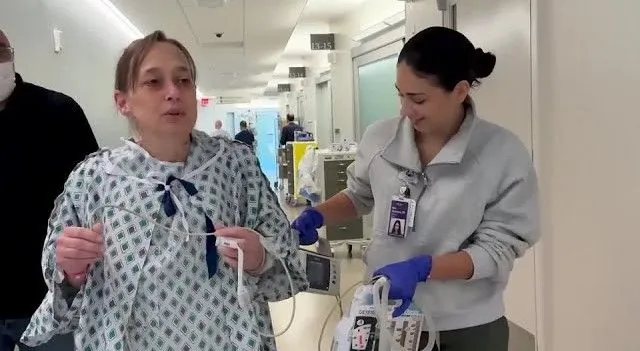“In New York, the first ever double lung transplant with the help of a robot was conducted: how it was 57-year-old medic Cheryl Merkar became the first patient who underwent a lung transplant with the help of a robot. Instead of a large incision, surgeons made several small ones, which will significantly speed up recovery.”, — write on: unn.ua
Details
The procedure is complementary to other minimally invasive procedures and is aimed at speeding up the healing process and shortening the hospital stay.
Mercar has always been an active person.
In addition to her work as an emergency medical technician, she enjoys motorcycles and owns a karate school with her husband.
But for more than 10 years, Mercar suffered from chronic obstructive pulmonary disease (COPD), which only worsened after the attack of COVID. A 57-year-old woman remembers the moment when she realized she had problems.
“I remember I had to take a call at a nursing home as an ambulance paramedic, and an 85-year-old security guard climbed the stairs better than me. And I knew it wasn’t good,” she said.
The woman spent years seeking help before NYU Langone Medical Center said she was eligible for a lung transplant.
“I knew I needed a two-lung transplant. And as soon as I was put on the list, I thought, OK, I’ve got a few more months. And five days later, I got a call. They said they had a 98 percent match. And when can you come? And my first reaction was, “Oh my God, you know what. I’ll be there in two hours.”
Mercar went under the knife at NYU Langone on October 22.
During the procedure, a team of doctors worked in tandem with the robot, removing the diseased lung, preparing the site for implantation, and then implanting the donor lung.
“In a conventional transplant, you either make a very large incision on either side of the chest, called a thoracotomy, or they just make a very large incision across the chest where we break the sternum… And either way, you have to put in these big retractors that push the ribs apart .They press on your nerves. And it’s just a big open incision. And that’s why the pain tends to be a problem for patients later on. Instead of doing a size eight incision inches, we can make a two-inch incision, and so on, we put in small ports for the robot, so the chest wall gets a lot less trauma,” says one of the doctors.
Less than a month after the operation, Mercar was already up and walking in the hospital.
“When I walk, I don’t need oxygen. And I can breathe. And sometimes my legs get a little tired, but at least I can still breathe. So it’s amazing what it does for me,” the woman said.
While recovering, Mercar has had time to reflect on what it means to be the first in the world.
“Cheryl, we were able to make both lungs robotic. You were the first in the world.” When you hear something like that, I don’t know how to describe it, it’s 8 billion people, and I was the first one to do it,” she said.
Now, days away from being discharged, she’s focused on those who helped her, including her organ donor: “All I know is that he was a young man. That’s it. When you think about what the family is grieving, and after two weeks I’m breathing it in. It’s extraordinary. It’s given me back my life.”
In the Center for Surgery and Transplantology named after Shalimov, they explained what immunosuppression is and what it is likeNovember 8 2024, 12:05 • 15995 views
